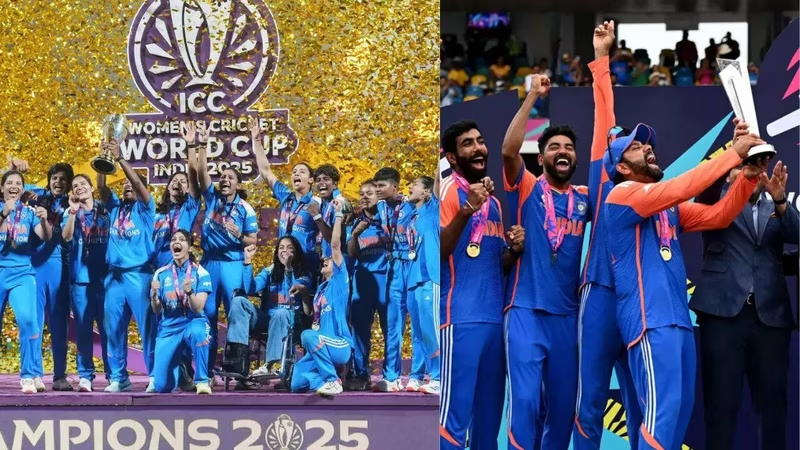Move over, men’s cricket—the future is here, and it’s wearing blue. The ICC Women’s World Cup 2025 didn’t just crown a champion; it shattered glass ceilings in sports broadcasting. The final between India and their rivals pulled in a jaw-dropping 185 million digital viewers—a figure that not only sets a new benchmark for women’s sport but actually matches the viewership of the 2024 Men’s T20 World Cup final .
With a total tournament audience of 446 million across digital platforms and a record surge in Connected TV (smart TV and streaming device) consumption, the numbers tell a story far bigger than a single match. They signal a cultural shift: women’s cricket isn’t just growing—it’s dominating the conversation, the screens, and the hearts of a global audience.
Table of Contents
- Women’s World Cup Viewership: The Numbers That Made History
- What Drove the Record-Breaking Audience?
- The India Effect and the Power of a Narrative
- Connected TV and the Changing Face of Cricket Fandom
- From World Cup to WPL: The Commercial Ripple Effect
- Global Implications for Women’s Sports
- Conclusion: Not a Trend, But a Transformation
- Sources
Women’s World Cup Viewership: The Numbers That Made History
The ICC’s official data reveals a watershed moment for Women’s World Cup viewership:
- Final match: 185 million digital viewers
- Total tournament: 446 million unique digital viewers
- Connected TV (CTV) consumption: Up by 68% compared to 2022 edition
- Peak concurrent viewers: Over 22 million during India’s final overs
Most astonishingly, the 185M figure for the women’s final is statistically on par with the 2024 Men’s T20 World Cup final between India and South Africa—a match widely touted as one of the most-watched cricket events of the decade . This parity isn’t coincidental; it’s the result of years of strategic investment, storytelling, and star power.
What Drove the Record-Breaking Audience?
Three key forces converged to create this perfect storm:
- Narrative magnetism: India’s journey—led by Shafali Verma, Harmanpreet Kaur, and emerging stars—was framed as a quest for redemption after near-misses in past finals.
- Digital accessibility: Free and low-cost streaming on platforms like JioCinema, ICC.tv, and YouTube Shorts highlights lowered entry barriers for young fans.
- Star power & relatability: Players actively engaged on social media, sharing behind-the-scenes moments that humanized them beyond the pitch.
Unlike traditional broadcast models, digital platforms allowed fans to watch highlights, mini-matches, and real-time stats—catering to the short-attention-span generation without diluting the drama.
The India Effect and the Power of a Narrative
Let’s be clear: India’s presence in the final was a massive amplifier. With over 1.4 billion people and a cricket-crazed diaspora, India’s involvement guarantees scale. But this time, it was more than just patriotism.
The team’s story resonated deeply: veterans seeking a final triumph, young guns bursting onto the scene, and a nation rallying behind women athletes in a way rarely seen before. Memes, fan art, and trending hashtags like #BlueTsunami and #SheRocks dominated social media, turning players into household names overnight.
This cultural moment echoes the 2007 Men’s T20 World Cup win—but with a crucial difference: it’s happening in the digital age, where virality multiplies impact exponentially.
Connected TV and the Changing Face of Cricket Fandom
The 68% surge in Connected TV viewership is perhaps the most telling metric. It means fans didn’t just watch on phones—they gathered in living rooms, projected matches on smart TVs, and treated the final like a cinematic event.
According to Nielsen Sports, CTV users are more engaged, watch longer, and are 3x more likely to follow up with merchandise or ticket purchases. This shift signals that women’s cricket is no longer “background content”—it’s prime-time entertainment worthy of family viewing.
From World Cup to WPL: The Commercial Ripple Effect
With such explosive viewership, all eyes now turn to the Women’s Premier League (WPL) 2026. Broadcasters, sponsors, and franchise owners are taking notes:
- Broadcast rights: Expect WPL 2026 media deals to skyrocket, potentially rivaling early IPL valuations.
- Sponsorship: Brands like Adidas, Dream11, and Reliance are likely to double down on women’s cricket assets.
- Ticket sales: Stadiums may expand capacity for WPL playoff matches, anticipating World Cup-level turnout.
As one BCCI official noted off-record: “The WPL isn’t just a league anymore. It’s the engine of a movement.” [INTERNAL_LINK:wpl-2026-auction-preview]
Global Implications for Women’s Sports
This milestone transcends cricket. The Women’s World Cup viewership record sends a clear message to global sports federations: invest in women’s games, and the audience will come. FIFA, World Rugby, and even the Olympics are watching closely.
The ICC’s decision to market the Women’s World Cup with the same budget and creative intensity as the men’s event paid off massively—a blueprint other sports should emulate.
Conclusion: Not a Trend, But a Transformation
The 185 million viewers tuning into the Women’s World Cup final isn’t a flash in the pan. It’s the culmination of strategic vision, authentic storytelling, and a generation of athletes who refused to be sidelined. As we pivot to WPL 2026 and beyond, one truth is undeniable: Women’s World Cup viewership has rewritten the rules of engagement—and the game will never be the same.
